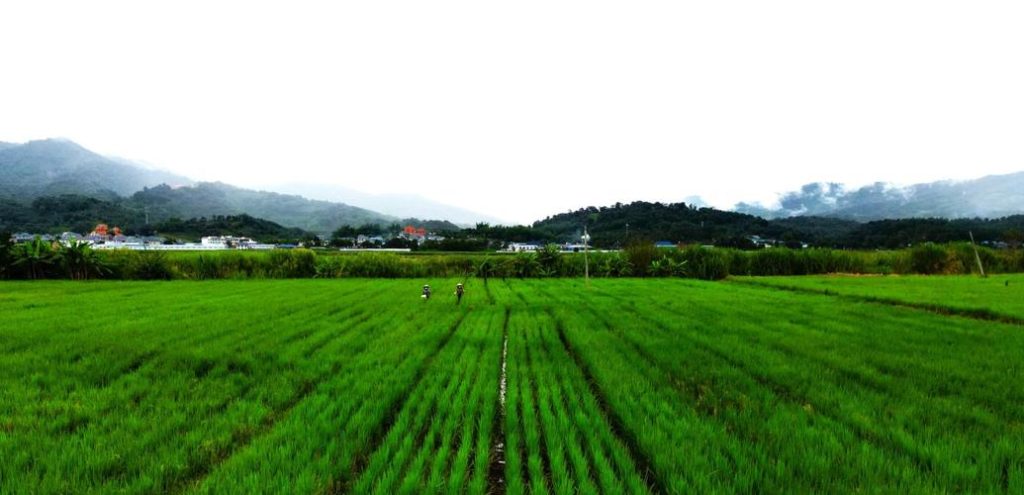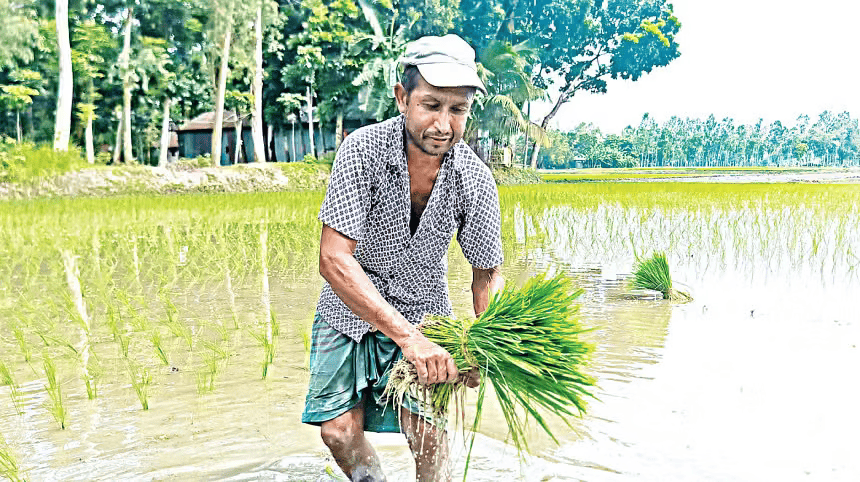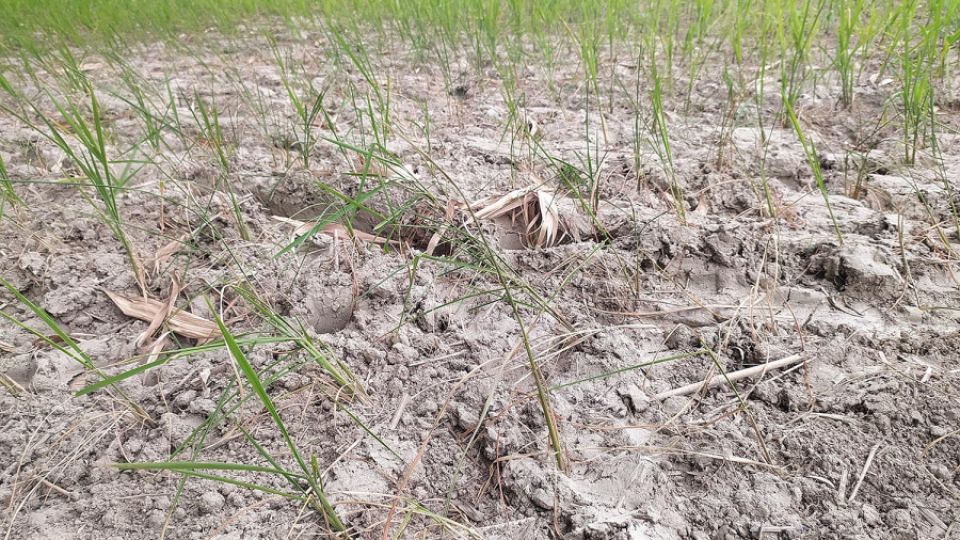Tags
Farmers move to greater-yielding, cost-saving perennial rice

After more than 9,000 years in cultivation, annual paddy rice is now available as a long-lived perennial. The advancement means farmers can plant just once and reap as many as eight harvests without sacrificing yield, an important step change relative to “ratooning,” or cutting back annual rice to obtain second weaker harvest.
A recent report in Nature Sustainability chronicles agronomic, economic and environmental outcomes of perennial rice cultivation across China’s Yunnan Province. Already the retooled crop is changing the lives of more than 55,752 smallholder farmers in southern China and Uganda.
“Farmers are adopting the new perennial rice because it’s economically advantageous for them to do so,” said Erik Sacks, professor in the University of Illinois’ department of crop sciences and co-author on the report. “Farmers in China, like everywhere else, are getting older. Everyone’s going to the cities; young people are moving away. Planting rice is very labor intensive and costs a lot of money. By not having to plant twice a year, they save a lot of labor and time.”
Sacks, along with senior author Fengyi Hu and Dayun Tao, began working to develop perennial rice in 1999 in a collaboration between the Yunnan Academy of Agricultural Sciences and the International Rice Research Institute. In subsequent years, the project grew to include the University of Illinois, Yunnan University and the University of Queensland. Another partner, The Land Institute, provided perennial grain breeding and agroecology expertise, along with seed funding to ensure continuity of the project.
The researchers developed perennial rice through hybridization, crossing an Asian domesticated annual rice with a wild perennial rice from Africa. Taking advantage of modern genetic tools to fast-track the process, the team identified a promising hybrid in 2007, planted large-scale field experiments in 2016, and released the first commercial perennial rice variety, PR23, in 2018.
The international research team spent five years studying perennial rice performance alongside annual rice on farms throughout Yunnan Province. With few exceptions, perennial rice yield [6.8 megagrams per hectare] was equivalent to annual rice [6.7 megagrams per hectare] during the first four years. Yield began to drop off in the fifth year due to various factors, leading the researchers to recommend re-sowing perennial rice after four years.
But because they didn’t have to plant each season, farmers growing perennial rice put in almost 60 percent less labor and spent nearly half on seed, fertilizer and other inputs.
“The reduction in labor, often done by women and children, can be accomplished without substitution by fossil fuel-based equipment, an important consideration as society aims to improve livelihoods while reducing greenhouse gas emissions associated with agricultural production,” Sacks said.
The economic benefits of perennial rice varied across study locations, but profits ranged from 17 percent to 161 percent more than annual rice. Even in sites and years when perennial rice suffered temporary yield dips due to pests, farmers still achieved a greater economic return than by growing the annual crop.
“That first season, when they planted the annual and the perennial rice side by side, everything was the same, essentially. Yield is the same, costs are the same; there’s no advantage,” Sacks said. “But the second crop and every subsequent crop comes at a huge discount, because you don’t have to buy seeds, you don’t have to buy as much fertilizer, you don’t need as much water, and you don’t need to transplant that rice. It’s a big advantage.”
Avoiding twice-yearly tillage, perennial rice cultivation also provides significant environmental benefits. The research team documented greater soil organic carbon and nitrogen stored in soils under perennial rice. Additional soil quality parameters improved as well.
Hu, professor and dean in the School of Agriculture at Yunnan University, said, “Modern high-yielding annual crops typically require complete removal of existing vegetation to establish and often demand major inputs of energy, pesticides and fertilizers. This combination of repeated soil disturbance and high inputs can disrupt essential ecosystem services in unsustainable ways, especially for marginal lands. Perennial rice not only benefits farmers by improving labor efficiency and soil quality, but it also helps replenish ecological systems required to maintain productivity over the long term.”
Another piece of the study assessed the low-temperature tolerance of perennial rice, with the goal of predicting its optimal growing zone around the world. Although significant exposure to cold limited regrowth, the research team predicts the crop could work in a broad range of frost-free locations.
Although they’ve already conducted on-farm testing and released three perennial rice varieties as commercial products in China and one in Uganda, the researchers aren’t done refining the crop. They plan to use the same modern genetic tools to quickly introduce desirable traits such as aroma, disease resistance and drought tolerance into the new crop, potentially expanding its reach across the globe.
Tim Crews, chief scientist at The Land Institute and study co-author, said, “While early findings on the environmental benefits of perennial rice are impressive and promising, more research and funding are needed to understand the full scope of perennial rice’s potential. Questions about carbon sequestration and persistence and greenhouse gas balances in perennial paddy rice systems remain. Researchers must also make progress on perennializing upland rice, which could curb highly unsustainable soil erosion on farmlands across Southeast Asia. As the work of Dr. Hu’s group at Yunnan University progresses, The Land Institute and an ever-growing network of collaborators will continue to support these research and scaling efforts for perennial rice globally.”
Sacks said, “I think now, with perennial rice in farmers’ fields, we have turned a corner. We have been feeding humanity by growing these grains as annuals since the dawn of agriculture, but it wasn’t necessarily the better way. Now we can consciously choose to make a better crop, and a better, more sustainable agriculture. We can fix the errors of history.”
The article, “Sustained productivity and agronomic potential of perennial rice,” is published in Nature Sustainability. The research was supported by the Land Institute, the National Natural Science Foundation of China, the Yunnan Provincial Science and Technology Department, the National and Yunnan Provincial Administration of Foreign Experts Affairs, and the China Postdoctoral Science Foundation.
https://agupdate.com/agriview/news/crop/farmers-move-to-greater-yielding-cost-saving-perennial-rice/article_08d13006-b94b-11ee-a055-fb2b80356cb9.htmlPublished Date: February 10, 2024






